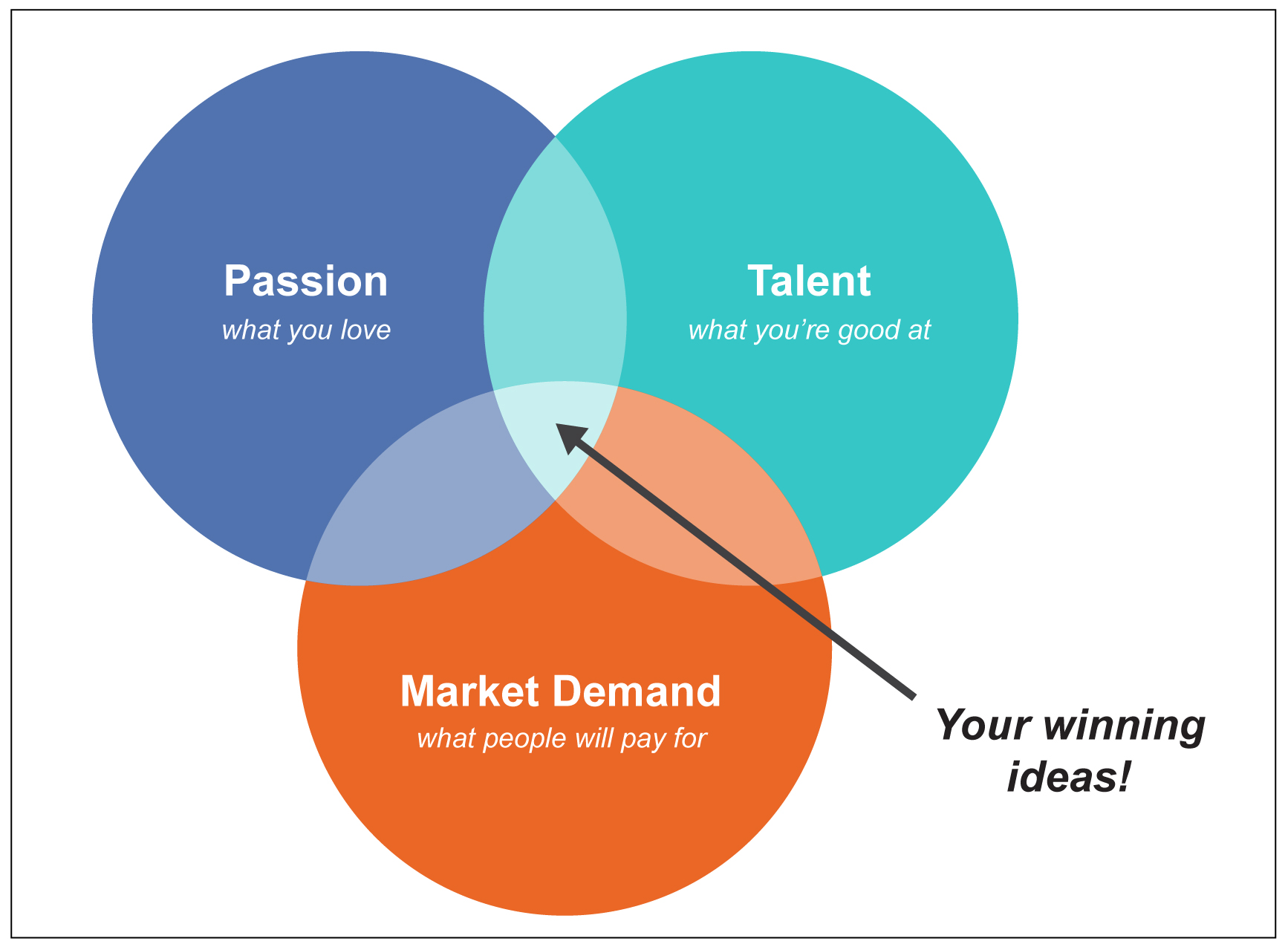When I was first learning to snowboard, it was easy for me to feel stuck.
Standing on my board at the top of the trail, I didn’t really want to move. Eventually, I started to inch forward, ever so slowly, hoping to control the board. Inevitably, it started to move faster than I wanted, so I would slam on the brakes, panicked.

This is what the journey of starting a business feels like to many new entrepreneurs. They want to be moving, but they are either unable to get started, or they allow themselves to get stuck and can’t keep any momentum going. Like my early days snowboarding, an entrepreneur’s lack of skill creates fear. The easiest way to stop the fear is to stop the motion.
If you’re like other new entrepreneurs, you have a lot of ideas but you are having trouble acting on them and turning one into a successful company.
Maybe you have started to pursue one of your ideas and then stopped. Or maybe you started researching a market or even producing an initial product or prototype.
But then it all ground to a halt… and your busy life took back over. So you’re stuck again.
Nature has a word for this—it’s called “inertia.” It means when you’re moving, it is pretty easy to stay moving but when you’re stopped, it is pretty easy to stay stopped and rather hard to get going again.
When you have ideas bouncing around your brain, you will almost never have a plan, or a roadmap, to document and vet them.
Some of your ideas will be better than others. Some will serve bigger markets, or will solve a really deep customer pain. Others will be ones you are really excited about.
But without a plan you’re like an explorer without a map, a compass, or a destination. A plan will help you conquer the inertia and get you moving again.
Here is a roadmap with 4 basic steps to follow to break your inertia and your fear.
Look for market pain that you can solve
Most great businesses are built to solve a customer’s problem. Customers with a need will look for solutions, and when they find a great one, they will tell their friends.
Think about Uber (or Lyft if you prefer).
Getting a taxi is a pain in the neck in most cities, and it’s expensive. Asking friends for rides is awkward.
Enter Uber. It grew like wildfire because it solved the problem so well that everyone was talking about it. (It turns out that Uber also solved another problem by helping people make some money on the side and this part of their business grew by word of mouth too).
————————————————-
Click HERE to Get a Roadmap
4 SIMPLE STEPS TO YOUR NEW BUSINESS IDEA
————————————————-
Find something you are passionate about
Notice that I did not say, “identify and pursue your passion.”
Being passionate about your startup is critically important. That does not mean, though, necessarily building a business around your passion.
Think about the TV show America’s Got Talent. If you watch a few episodes, you will see plenty of people with passion but limited talent. As a founder, you want to use your talents to create your business, and pursue that with a passion.
You want to find ideas that combine your skills with things you like with market demand (from step 1). The best ideas are found that the intersection:

Make a plan
As I said earlier, having an idea is not enough.
You need a plan to build that idea into a business.

The most important step in the plan is to prove that customers are interested in your product or service. At the most basic level, you need to prove:
• Customers have this pain
• You can find those customers online or through other marketing channels
• You can differentiate your solution from the others in the market and convince the customers to try you
• Your solution works to solve their pain
• You can make money by selling the solution
In my opinion, the best way to outline this type of plan is with a 1-2 page outline of your assumptions and a structure for proving or disproving them. At this point, you don’t need to create a fancy, complex business plan.
I prefer a plan like “Lean Canvas” and I have a guide for how to use a Lean Canvas or short-form business plan that you can get here.
Hold yourself accountable
Very often in this stage, entrepreneurs will get “stuck.” It’s a pretty common human response, actually. Like me with snowboarding, as I picked up speed, I got more nervous about an epic wipeout. As things get hard in the early stages of your business, you don’t know what you’re doing, which feels very uncomfortable. So you stop.
You stay stopped, or blocked, because you don’t have anyone holding you accountable.
The three best ways I know to hold yourself accountable are cofounders, coaches, and masterminds.
Cofounders add skills, passion, network connections and a different perspective. They help hold you accountable, partly by being up when you’re down. You can help drive each other.
Coaches can help give you tools, tips, tricks, and strategies for staying on track. But coaches need to get paid and that can be a challenge when you’re trying to maximize every dollar.
Mastermind groups, or accountability groups, are teams of like-minded entrepreneurs who check in with each other regularly about goals and progress against those goals. You can ask your team for help with inertia.
How do you implement this?
OK, so I have given you a basic map, but you might be wondering how to implement it and stay on track.
First, recognize that you are likely going to get stuck. The trick is to not to stay that way.
Start by recognizing where you are stuck. Are you having difficulty choosing an idea, or stuck in taking your selected idea forward?
People who get stuck with ideas probably lack the passion in any one of them to get started or create positive motion. For those folks, I would suggest continuing to work on new ideas until one of them GRABS YOU. When an idea gets your heart pumping, you’ll know.
If you get stuck after researching a couple of ideas, it’s probably lack of knowledge that is creating fear. The fear grinds your momentum to a halt. If that is the case, you might think about taking on a mentor who can add to your knowledge, or a co-founder who will help you push through the fear.
If you want a more structured path, take a look at this guide that I created to help you go from idea to business in under 30 days.
Have you been stuck along the path? What has helped you break loose, and what do you still need help with? Let me know in the comments.
Save
Save
Save
Save
Save
Save
Save




